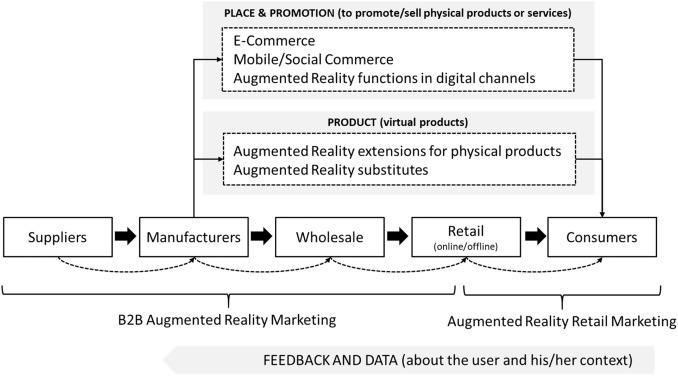Future-Proofing Education: Effective Strategies policymakers Need to Know
Education is rapidly evolving, shaped by technological advancements, a shifting global workforce, and ever-changing societal needs. For policymakers, future-proofing education is no longer optional—it’s essential. This article dives deep into the effective strategies policymakers need to know to create resilient education systems. Read on to discover actionable insights, real-world examples, and expert recommendations to ensure today’s learners are prepared for the demands of tomorrow.
Why Future-Proofing Education Matters
Today’s world demands adaptable, lifelong learners. Automation, artificial intelligence, and digital transformation are redefining workforce needs. Without future-proofed education systems, students risk being left behind by rapid change.Future-proofing education means building flexible curriculums, fostering critical skills, integrating technology, and ensuring equitable access for all learners.
- adapting to technological disruption: Emerging technologies are transforming employment and necessitating new skills.
- Fostering lifelong learning: Education systems must encourage continual upskilling and adaptability.
- Promoting equity: Inclusive strategies ensure all learners benefit from educational innovation.
- Building resilience: Future-proofing helps education systems withstand shocks—like pandemics or economic shifts.
Core Strategies for Future-Proofing education
1. Embrace Technology Integration
Technology-driven learning environments are foundational for modern education. Policymakers should promote digital literacy, integrate EdTech solutions, and support teacher training for technology use.
- Digital Infrastructure: Invest in high-speed internet, reliable devices, and robust learning management systems.
- Adaptive Learning: Utilize artificial intelligence and data analytics to personalize student experiences.
- EdTech Partnerships: Collaborate with technology providers for updated tools and resources.
2. Develop Soft Skills Alongside Core Subjects
Tomorrow’s workplace values creativity,collaboration,critical thinking,and emotional intelligence. curriculums must go beyond rote learning to foster these essential soft skills.
- Project-Based Learning: Encourage collaboration and problem-solving through real-world projects.
- Social-emotional Learning (SEL): Introduce SEL programs to build self-awareness, empathy, and resilience.
- Interdisciplinary Studies: Integrate arts, sciences, and humanities for a holistic approach to education.
3. Encourage Lifelong Learning Pathways
Education should not end with formal schooling. Policymakers must champion systems that facilitate continuous upskilling, reskilling, and adult education.
- Micro-Credentials: Offer short courses and certifications in emerging skill areas.
- Flexible Learning Models: Provide options like online courses, evening classes, and workplace training.
- Support for Non-Traditional Learners: Recognize prior learning and alternative education experiences.
4. Ensure Equity and Inclusivity
Future-proofing education must leave no learner behind. Equity-focused policies ensure marginalized, rural, and differently-abled students have access to quality resources and opportunities.
- Accessible EdTech: choose digital solutions compliant with accessibility standards.
- Targeted support: Allocate funding for programs supporting disadvantaged communities.
- Bilingual & Multicultural Education: Encourage policies that respect and integrate diverse backgrounds.
5. Foster Teacher Professional Advancement
Teachers are the linchpin of future-ready education. Continuous professional learning ensures educators can navigate new technologies, teaching strategies, and shifting curricula.
- Ongoing Training: Invest in regular workshops and courses on digital tools,pedagogical trends,and SEL.
- Communities of Practice: Enable peer learning and mentorship among teachers.
- Feedback Mechanisms: Implement systems for teachers to share insights and challenges.
Benefits of Future-Proofing Education
The dividends from future-proofing education extend far beyond classrooms.Below are key benefits for students, communities, and societies:
- Enhanced Employability: Students acquire skills aligned with evolving job markets.
- Economic Growth: A future-ready workforce fuels entrepreneurship, innovation, and productivity.
- Social Mobility: Access to quality learning narrows socio-economic divides.
- Resilience to Disruption: Education systems and learners are better prepared for global crises.
Case Studies: Success Stories in Future-proofed Education
Singapore’s SkillsFuture Initiative
singapore’s SkillsFuture is a national movement promoting lifelong learning and skills mastery. By subsidizing courses, supporting industry partnerships, and developing digital platforms, it builds a resilient, adaptable workforce prepared for next-generation challenges.
Finland’s Holistic Approach
Finland’s education system emphasizes interdisciplinary learning, play, creativity, and teacher autonomy. Digital tools are seamlessly integrated, and students benefit from minimal high-stakes testing—resulting in high academic achievement and adaptability.
Estonia’s Digital Revolution
Estonia, a leader in educational technology, implemented comprehensive digital literacy from early grades and incentivized digital textbook development. When schools moved online during the COVID-19 pandemic, Estonia transitioned smoothly thanks to earlier investments in digital infrastructure.
Practical Tips for Policymakers
- Conduct Regular Needs Assessments: Gather data from teachers, students, and industry to align curricula with evolving demands.
- Involve Stakeholders: Collaborate with educators, local communities, and private sector partners in decision-making processes.
- Monitor & Evaluate: Set measurable goals for innovation initiatives and track their long-term impact.
- Prioritize Sustainability: Invest in solutions that are environmentally, financially, and socially sustainable.
- Promote Global competence: Integrate multicultural education, languages, and global citizenship into learning frameworks.
Voices from the Field: First-Hand Experience
“When our district embraced technology integration, it wasn’t just about devices—it was about creating a culture of innovation. We saw students collaborating across continents, solving real-world problems, and building skills we hadn’t imagined 10 years ago.”
— Maria Lawson, School Superintendent, California
“Continuous professional development empowered me to use new teaching tools confidently. It’s helped me connect with students in more meaningful ways and support every learner’s potential.”
— David Chen, High School Teacher, Toronto
Conclusion: Shaping the Future of Education
Future-proofing education is a shared duty that requires vision, collaboration, and courage from policymakers. By integrating innovative strategies—embracing technology, prioritizing equity, supporting teachers, and fostering lifelong learning—education systems can remain resilient in the face of rapid change. Now is the time to invest in educational policies that empower every learner to thrive in a future that’s as dynamic as it is uncertain.Let’s build the future of education, together.
Interested in staying updated on innovative educational strategies? Subscribe to our newsletter for the latest insights and resources for educators and policymakers.

